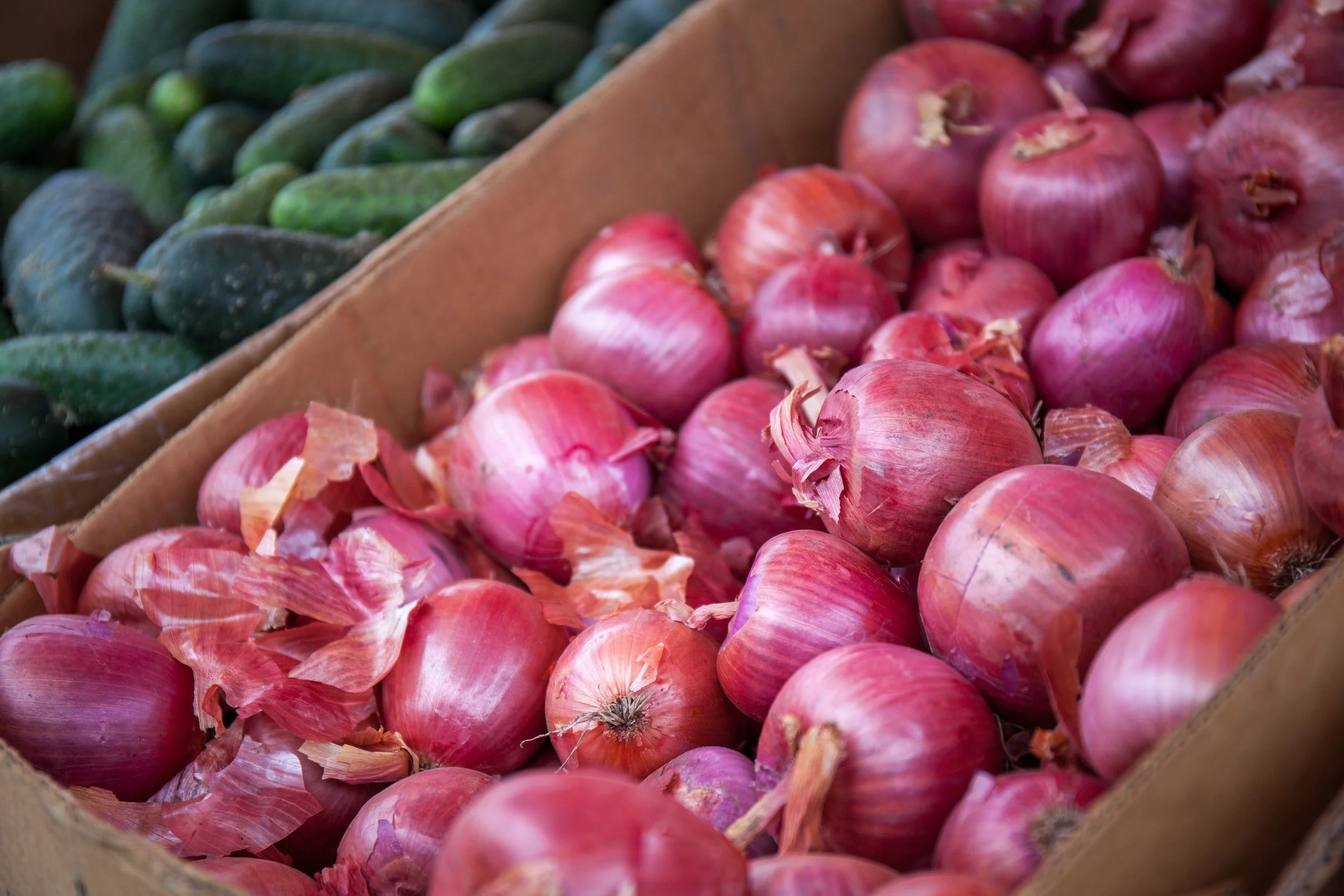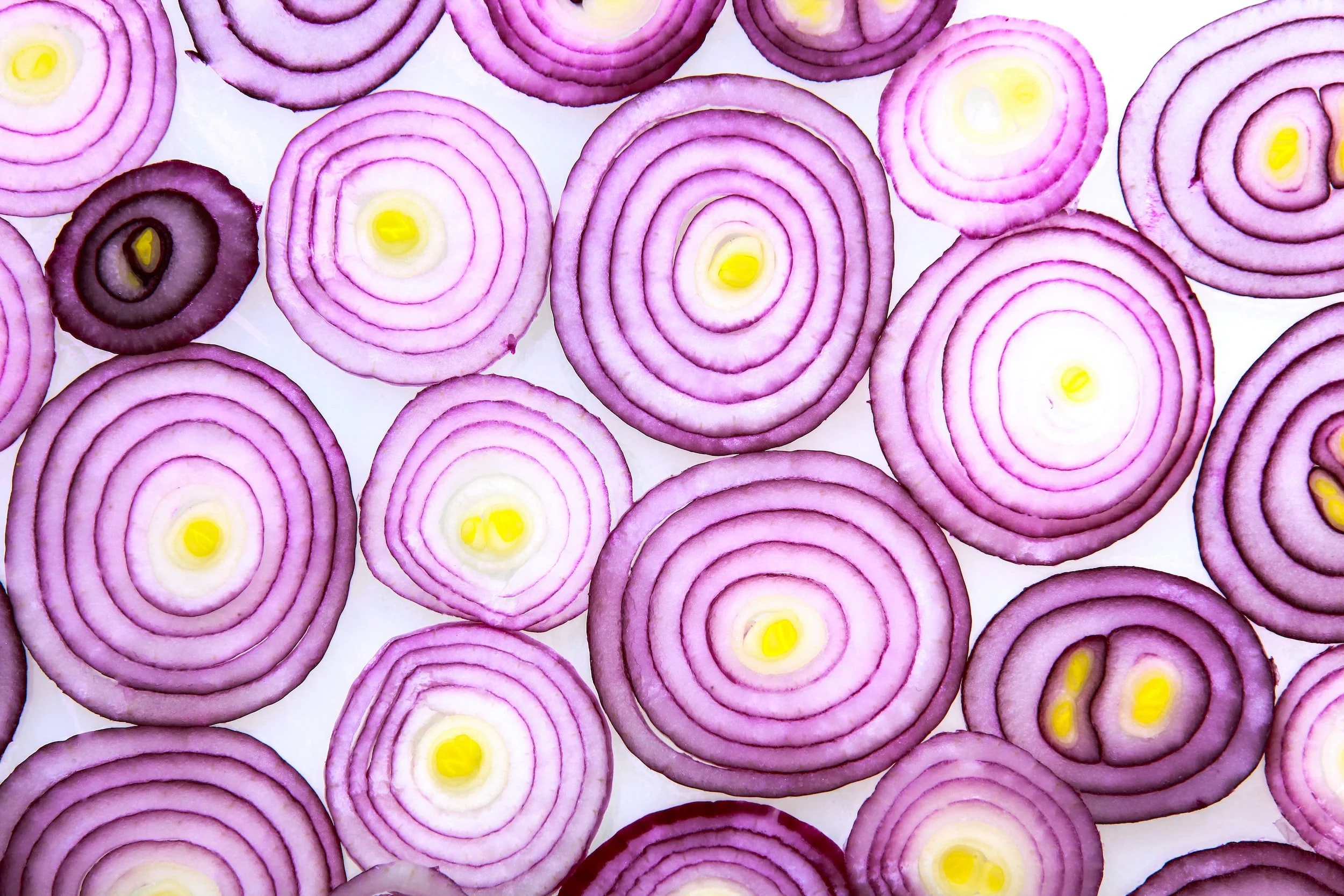The Benefits of Red Onions
Red onions, also known as purple onions.
Red onions, also known as purple onions, are a type of onion that have a deep red or purple skin and a white or reddish-purple flesh. They are known for their strong, pungent flavor and are often used in salads, sandwiches, and as a topping for pizza and burgers. Red onions are also a popular ingredient in many Mediterranean, Mexican, and Indian dishes.
Red onions are a good source of several important nutrients, including:
Vitamin C: Red onions are a good source of vitamin C, which is an antioxidant that helps protect cells from damage caused by free radicals.
Vitamin B6: Red onions are a good source of vitamin B6, which is important for the formation of red blood cells and the proper functioning of the nervous system.
Folate: Red onions are a good source of folate, which is important for cell growth and the formation of red blood cells.
Fiber: Red onions are a good source of fiber, which is important for maintaining a healthy digestive system.
Red onions also contain compounds that have been shown to have potential health benefits such as:
Quercetin: A flavonoid antioxidant that have anti-inflammatory and antihistamine properties.
Allicin: A compound that have potential to lower the risk of heart disease and cancer.
1 cup (160g) of chopped red onions will contain approximately:
Calories:64
Carbohydrates:15g
Fiber:2g
Sugar:4g
Protein:1g
Vitamin C:16% of the RDI
Vitamin B6:5% of the RDI
Folate:7% of the RDI
Vitamin K:5% of the RDI
Please note that the nutritional information may vary slightly depending on the exact ingredients used and the serving size.
How to prepare and cook red onions
Red onions can be prepared and cooked in a variety of ways. Here are a few common methods:
Slicing: To slice red onions, cut off the top and bottom of the onion and peel off the skin. Cut the onion in half lengthwise, and then slice it as thinly or thickly as desired. Sliced red onions can be eaten raw in salads, sandwiches, or as a topping for pizza and burgers.
Dicing: To dice red onions, cut off the top and bottom of the onion and peel off the skin. Cut the onion in half lengthwise, and then slice it into thin half-moons. Stack the half-moons and cut them into small, even cubes. Diced red onions can be used in cooked dishes, such as soups, stews, and stir-fries.
Caramelizing: To caramelize red onions, slice or dice the onions and cook them over low heat in a pan with a small amount of butter or oil until they are soft and browned. This brings out the natural sweetness of the onions and adds a rich, complex flavor to dishes. Caramelized onions can be used as a topping for sandwiches, pizza, or as a side dish or pure plant based platters.
Grilling: To grill red onions, slice or dice the onions and thread them onto skewers. Grill the skewers over medium-high heat, turning occasionally, until the onions are tender and slightly charred. Grilled red onions can be used as a topping for sandwiches, pizza or as a side dish.
Roasting: To roast red onions, slice or dice the onions and toss them with oil and seasonings. Roast them in the oven at a high temperature until tender and slightly caramelized. Roasted red onions can be used as a topping for sandwiches, pizza or as a side dish.
It's important to remember to always use a sharp knife and handle the onions carefully to avoid cutting yourself, also when cooking with onions, it's important to keep an eye on the heat and stir them frequently to avoid burning.
Best way to Store Red onions
The best way to store red onions is to keep them in a cool, dry place with good air circulation. Here are a few tips on how to store red onions to ensure they stay fresh for as long as possible:
Keep them in a cool, dry place: Red onions should be stored in a cool, dry place, away from direct sunlight. A pantry or a root cellar is a good option, as long as the temperature is between 32-40°F(0-4°C) and humidity is low.
Don't refrigerate: Red onions should not be refrigerated because the humidity and temperature inside the refrigerator can cause them to spoil more quickly.
Avoid storing near potatoes: Potatoes give off a gas called ethylene that can cause onions to spoil more quickly, so it's best to store them in separate areas.
Keep them dry and well ventilated: Make sure to store the onions in a well-ventilated area, and keep them dry by wiping them dry before storing them.
Keep them whole: If you can, store the onions whole, with the skin still on. Once you cut into an onion, it will start to lose its freshness faster, so it's best to cut them as you need them.
Use the older ones first: Red onions have a longer shelf life than other types of onions, but they will still eventually spoil. Be sure to use the older onions first, and use the fresher ones later on.
By following these tips, you can expect red onions to last for several weeks, or even up to 2-3 months in optimal storage conditions.

